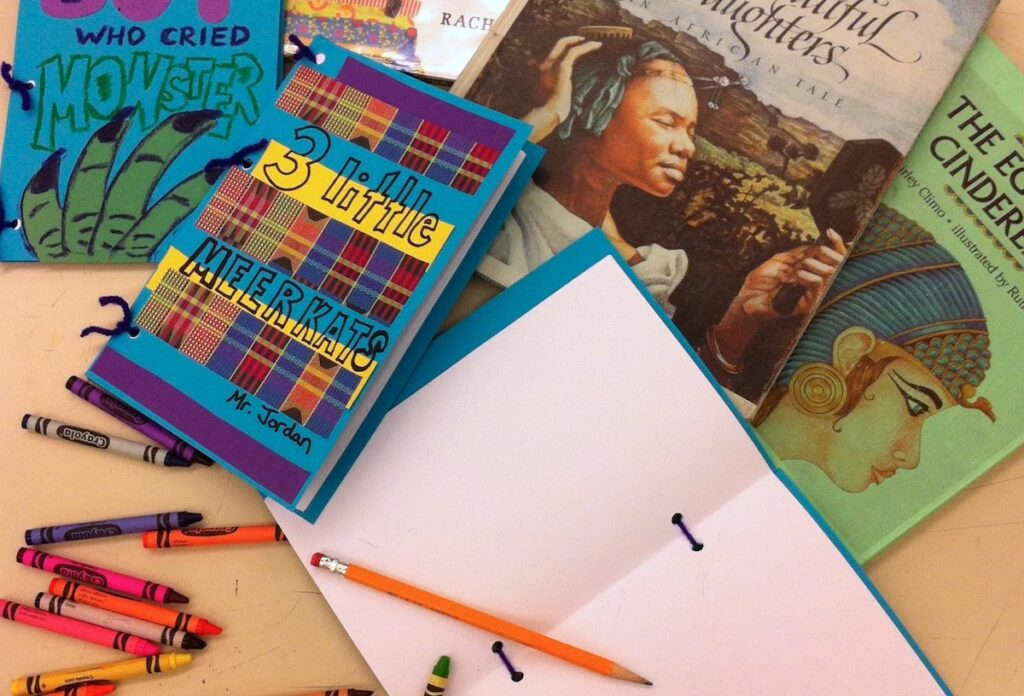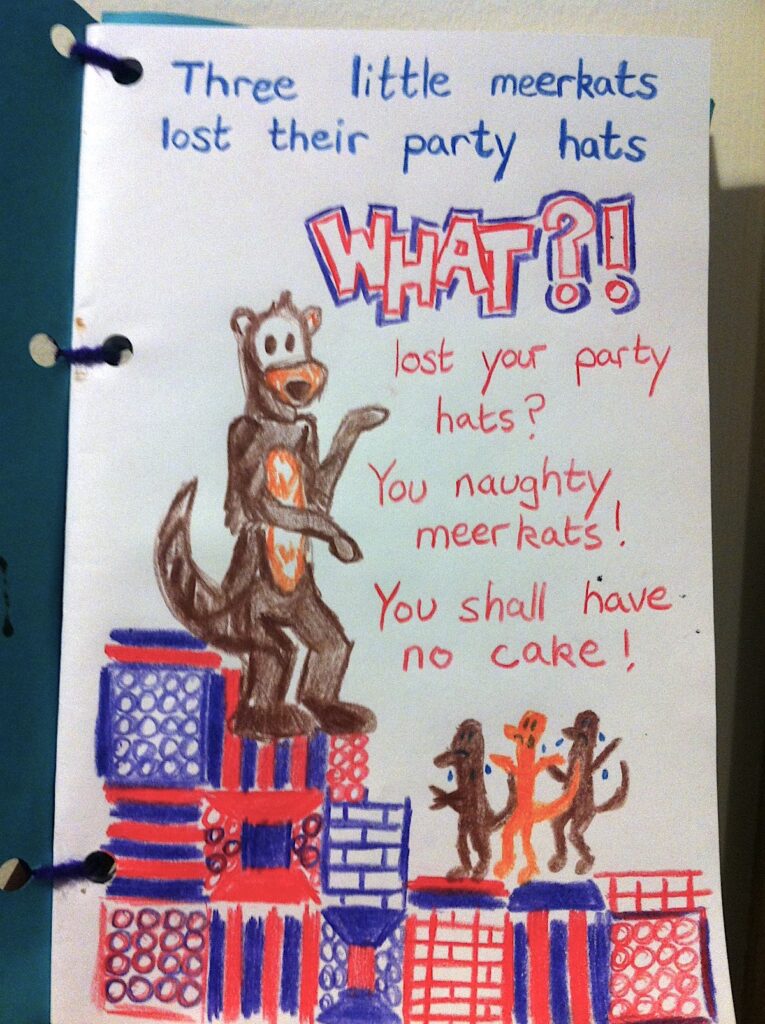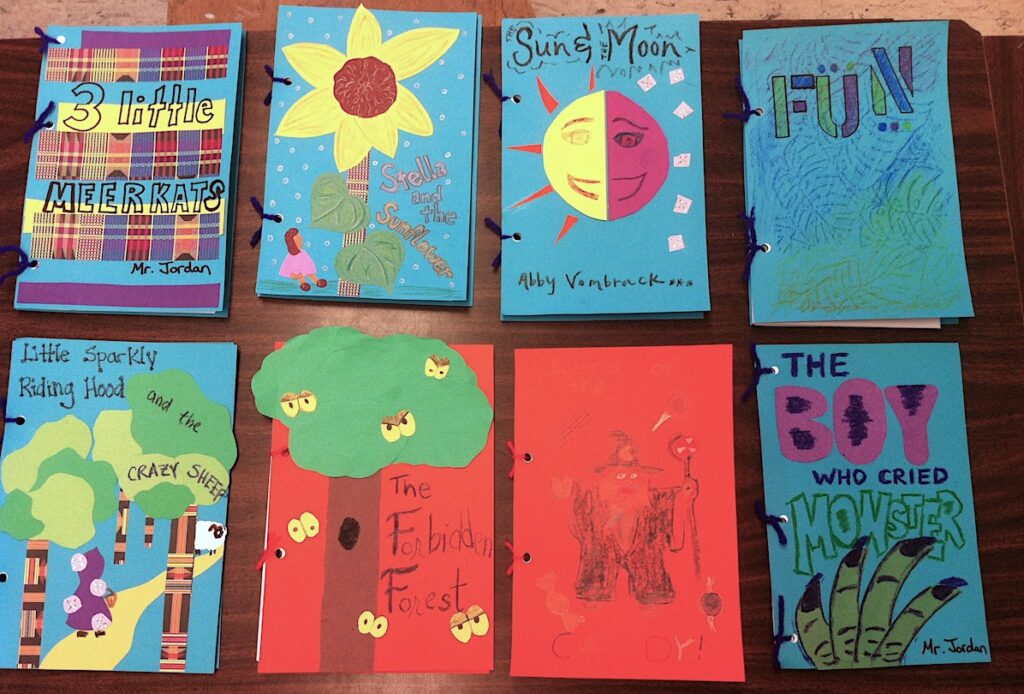Artists throughout history have told stories. From cave paintings to graphic novels, people have used art to communicate their experiences, fantasies, and mythology. Thus, existing visual narratives, such as fairytales, can be an excellent theme for an art project. You may already have something similar in your existing curriculum, but consider giving it a creative twist.
Help your students become creative storytellers and artists at the same time.
Explain to students throughout history; stories have been handed down from one generation to another. Some of these stories are told by word-of-mouth, while others have been told visually on walls, textiles, and paper. Given their universal appeal, fairytales can be found in almost every culture.
The following lesson is based on Cinderella, but the approach could be taken with any “classic” fairytale.
First, examine what students already know.
Truth be told, Disney Didn’t Invent Cinderella, but the image of a rags to riches princess in a blue dress immediately comes to many minds. Talk with students about their knowledge and assumptions of the fairytale. What do they like? Dislike?
Next, explore some unfamiliar territory.

Present students with images from three to four different children’s books and images based on the classic fairy tale, but different from Disney’s happily ever after version. Here are options that span global cultures:
Mufaro’s Beautiful Daughters by John Steptoe
Yeh-Shen: A Cinderella Story from China retold by Ai-Ling Louie
The Egyptian Cinderella by Shirley Climo
The Rough-Face Girl by Rafe Martin
These stories retell the classic tale of Cinderella in new and interesting ways. The characters, time, and place are changed to make the story new or remixed. However, key elements and the plot of the story are true to the original. Discuss with your students, analyzing the differences, similarities, and cultures represented in each story.
Show other children’s books of classic stories, re-imagined through different perspectives and places. You may know some others already, but feel free to ask a reading teacher or librarian for suggestions! Some other inspirational books are The True Story of the Three Little Pigs by Jon Scieszka and Lane Smith or The Stinky Cheese Man and Other Fairly Stupid Tales by Lane Smith.
Then, have students remix a fairytale of their own!

Encourage students to create their own remixed fairy tale. Each student will create a blank booklet and fill the pages with drawings and text to retell the story of their choice. They can make changes to the original characters or setting to create a new version of a well-known story.
Let students’ imaginations run wild with materials. Students can choose materials to best suit their story. For instance, if the setting in their story takes place in Egypt, they could create a cover to mimic papyrus. If the story takes place in the Middle Ages, they could use aluminum foil to represent a knight’s armor. Encourage students to think of their story and allow the details to navigate the direction of their creative choices. You could provide cut copy paper for the inside pages and use a three-hole punch to assemble with string or brass fasteners. The cover could be made with something a little heavier like tag-board or cardboard, and students could decorate with a variety of supplies.
A few possibilities could be:
- Collaged images
- Wrapping paper
- Scrapbook paper
- Fabric
- Wallpaper samples
- Aluminum foil
Finally, share and discuss students’ new tales.
When the books have been completed, students can share their story with the class. Have their peers try to identify the original story and explain how it was altered.
This is a fun way to introduce students to the concept of visual narrative. Tell them to have fun and be creative in their changes to creating a remixed fairy tale!
3 Ways To Dig Deeper

Make It Cross-Curricular
Find out if students are reading a work of fiction in the classroom or with their literature teacher. Use this as an opportunity for students to demonstrate their understanding of the characters, plot, etc., and apply the themes in a new way. Ask students to choose one element from the story they previously read, and change it to create a new story inspired by the original.
Get Students To Write
Students can apply what they know about narrative writing to create an original story, complete with illustrations and a compelling cover. Give some loose guidelines to help them get started, such as a minimum number of characters, an introduction, conflict, and resolution, number of pages, etc. This is another opportunity to reach out to your coworkers and apply common language or expectations for writing. Keep in mind the focus for your lesson will always be the artmaking.
Incorporate Family Heritage
Storytelling exists across cultures and throughout history. Students can identify their own heritage and look for legends or folktales to illustrate. Through research, they may find that many folktales have been the inspiration for new stories, movies, and television programs. Artists bring these to life with their unique interpretations. Encourage students to think of new and exciting ways to present a story from their own ethnic or cultural backgrounds.
Assessment
Remember, even though students are doing a fair amount of writing to bring their story to life, this is still an art lesson. Assess their work on how well they communicated the story visually. Give specific requirements for the number of illustrations you’d like students to create, a minimum number of full-page vs. partial-page illustrations, etc. This will give students a clear indication of how their work will be assessed.
Some questions to ask:
- Does the artist’s cover indicate something about the setting, time period, or character(s)?
- Does the artist’s story include the minimum number of illustrations?
- Did the artist create full-page as well as partial-page illustrations?
- Do the artist’s illustrations enhance elements of the story such as a setting or character description?
- Did the artist make changes to the original setting, time, or characters to create a new story?
Fairytales have captured the attention of story-lovers for centuries. Their universal and long-lasting appeal make them ripe for inspiration and imagination. This lesson uses the best of fairytales combined with artmaking and creativity. Happily ever after indeed.
What ideas do you have for teaching visual narratives?
What bookmaking or illustration projects have you tried in your classroom?
Magazine articles and podcasts are opinions of professional education contributors and do not necessarily represent the position of the Art of Education University (AOEU) or its academic offerings. Contributors use terms in the way they are most often talked about in the scope of their educational experiences.





